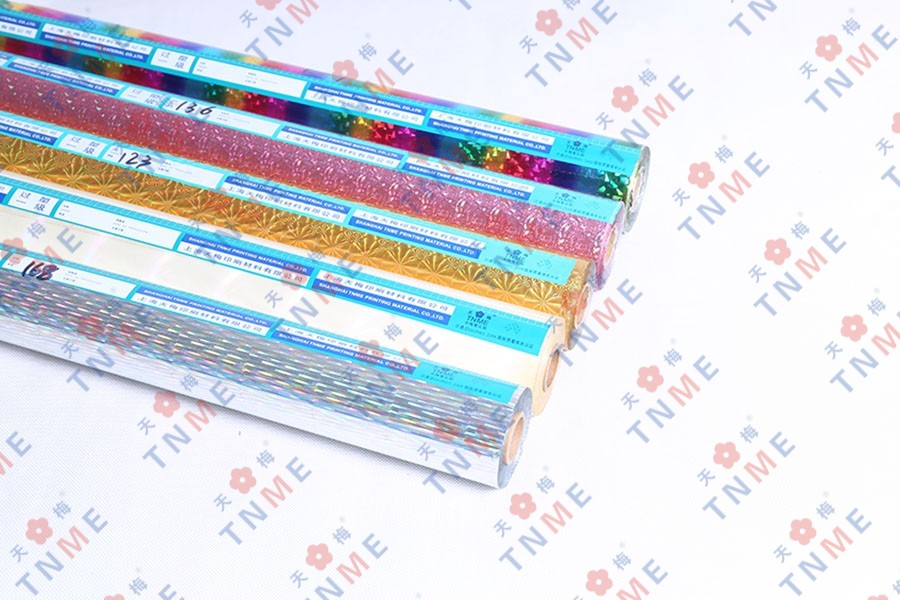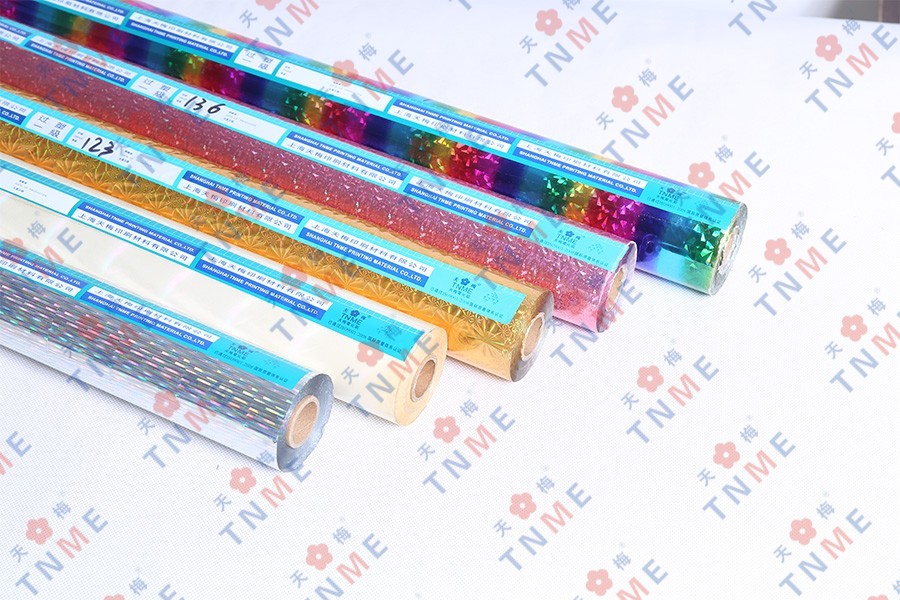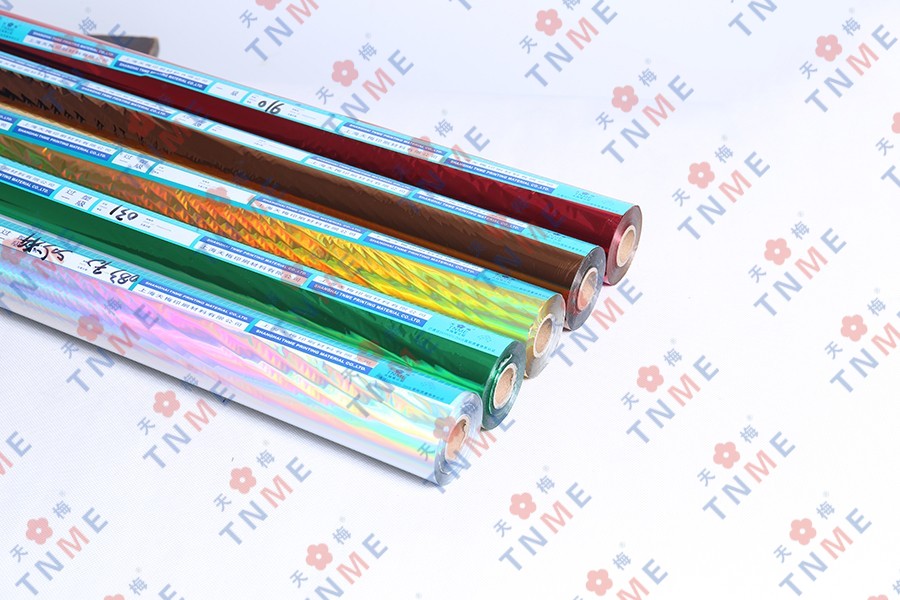What Surfaces and Materials Can You Apply UV Foil To?
The pursuit of visual excellence and durable product finishing is a constant driver in design and manufacturing. Among the myriad of options available, uv materials foil has emerged as a standout solution, renowned for its ability to impart brilliant metallic, holographic, and pigmented effects onto a vast array of surfaces. A fundamental question that arises for designers, engineers, and buyers considering this technology is: what are the practical limits of its application? Understanding the compatibility of uv materials foil with different substrates is not merely a technical detail; it is the cornerstone of achieving a flawless, high-value finish that meets both aesthetic and functional demands.
Understanding the Fundamentals of UV Foil Adhesion
Before delving into specific materials, it is essential to grasp the basic principles that enable uv materials foil to adhere to a surface. The process is not one of simple physical attachment but a sophisticated chemical and mechanical bonding event. The successful application of uv materials foil relies on a two-stage process: the application of a UV-curable adhesive and the subsequent activation of that adhesive through ultraviolet light.
The key lies in the properties of the UV-curable adhesive. This specially formulated liquid is applied to the substrate in the desired pattern or full coverage. When exposed to the precise wavelength and intensity of UV light in the foiling machine, this adhesive undergoes an instantaneous polymerization reaction. It changes from a liquid to a solid state, creating an extremely tacky surface. It is at this precise moment of controlled tackiness that the uv materials foil is pressed onto the substrate. The foil’s carrier film is then peeled away, leaving the decorative or functional layer firmly bonded to the cured adhesive. Therefore, the primary factor determining compatibility is not necessarily the substrate itself, but the ability of the UV adhesive to wet, adhere to, and cure properly on that substrate. Factors such as surface energy, porosity, and chemical composition all play a critical role in this initial bonding phase. A common buyer search term related to this is “how does uv foil work”, which underscores the need to understand this foundational process.
Paper and Cardboard Substrates
The paper and packaging industries are among the most prolific users of uv materials foil. This category represents a highly compatible and diverse group of materials for the foiling process.
Coated Paper and Board
This is arguably the most ideal substrate for achieving premium results with uv materials foil. Materials such as coated cartonboard, CCNB, and SBS board have a smooth, sealed surface that allows the UV adhesive to sit on top without being absorbed. This facilitates a clean, sharp transfer and maximizes the reflective brilliance of the metallic or holographic foil. The high surface energy of these coated stocks promotes excellent adhesion of the adhesive, resulting in a durable finish that is highly resistant to scratching and abrasion. This makes it the go-to choice for high-end product packaging, cosmetic boxes, premium publications, and corporate stationery. The finish significantly enhances the perceived value and shelf impact of the product.
Uncoated and Recycled Paper
Applying uv materials foil to uncoated or heavily recycled papers presents a different set of challenges and opportunities. These surfaces are porous and textured, which can lead to a less reflective and potentially speckled finish as the adhesive sinks into the substrate. However, this very characteristic can be leveraged to create distinctive, tactile effects with a vintage or artisanal quality. Success in this area often requires careful selection of the adhesive viscosity and potentially a higher application weight to ensure sufficient adhesive remains on the surface to capture the foil. The result may not be the mirror-like finish seen on coated stocks, but it offers a unique, sophisticated aesthetic that is highly sought after for specialty projects, craft products, and brands wishing to communicate an organic or eco-conscious identity. A relevant industry search term here is “uv foil on recycled paper”.
Paperboard and Folding Cartons
The structural nature of paperboard and folding cartons makes them excellent candidates for uv materials foil application. The process can be integrated inline with die-cutting and creasing operations. The rigidity of the board provides a stable, flat surface for the foiling stamp, ensuring consistent pressure and heat distribution (if used) across the entire area. This consistency is key to achieving a uniform foil layer without missed areas, known as hickies. The durability of the cured foil layer is also a significant benefit for folding cartons, as it resists cracking along score lines better than many traditional inks or coatings, maintaining the integrity of the luxury unboxing experience.
Plastic and Polymer Surfaces
The versatility of uv materials foil is profoundly evident in its application across the wide spectrum of plastic polymers. This capability is critical for industries ranging from consumer electronics to automotive interiors. However, success in this domain requires a deep understanding of polymer science.
Compatible Plastics and Pretreatments
Not all plastics are created equal in terms of their surface energy. Plastics like Polyvinyl Chloride (PVC), Acrylic (PMMA), and Polycarbonate (PC) generally have surface energies that are conducive to good adhesion with UV adhesives. They can often be foiled directly with excellent results. However, the real challenge and the most common application involve polyolefins, such as Polyethylene (PE) and Polypropylene (PP). These materials have very low surface energy, making them inherently non-stick. To successfully apply uv materials foil to these substrates, a pretreatment is almost always mandatory. The most common and effective pretreatment is corona or plasma treatment. This process momentarily raises the surface energy of the plastic by using a high-voltage electrical discharge to oxidize the surface, creating microscopic pores and polar sites that the adhesive can mechanically and chemically lock onto. Flame treatment is another method used, particularly for thicker plastic parts. For buyers and manufacturers, understanding the need for pretreatment is crucial, and searches such as “foiling on polypropylene” often lead to discussions about these necessary preparatory steps.
Applications in Injection Molding and Extrusion
uv materials foil is extensively used in the decoration of injection-molded and extruded plastic parts. A common method is the in-mold labeling process, where a pre-printed and foiled label is placed into the mold before the plastic is injected. The heat and pressure of the molding process fuse the label—and its foil decoration—permanently to the part, creating a seamless, highly durable finish. This is a popular technique for appliance control panels, automotive interior trim, and tool housings. Alternatively, foil can be applied post-mold using a stamping process with a heated die. The combination of heat, pressure, and the correctly formulated UV adhesive allows the foil to bond to the three-dimensional contours of the plastic part. This is widely used for decorating cosmetic containers, pen barrels, and electronic device casings.
Metal and Glass Substrates
While applying a metallic foil to a metal surface may seem counterintuitive, the functional and aesthetic possibilities are significant. Similarly, the application of uv materials foil to glass opens up new avenues for decorative and branding applications.
Metal Application Techniques
The primary challenge with metal substrates is their non-porous, often slick surface. To achieve a strong bond, the metal surface typically requires thorough cleaning and, in some cases, a light abrasion or chemical priming to create a microscopically rough surface for the adhesive to key into. Aluminum, steel, and tinplate are the most common metals used. Once properly prepared, uv materials foil can be applied to create distinctive branding, instructional labels, or decorative accents on products like promotional drink bottles, luxury pens, tool cases, and specialty packaging. The foil provides a decorative element that is highly resistant to corrosion, fading, and wear, often outperforming printed inks in harsh environments. This durability makes it a suitable choice for both indoor and outdoor metal products.
Glass and Ceramic Considerations
Glass presents a unique challenge due to its perfectly smooth, chemically inert, and high-surface-energy nature. While the adhesive can wet the surface effectively, achieving a permanent, wash-proof bond requires specific adhesive formulations, often epoxy-based, that are designed for glass and ceramic. The application process must be meticulously controlled. The result can be stunning, allowing for the creation of intricate, metallic designs on glassware, perfume bottles, decorative tiles, and cosmetic jars. It is important to note that the adhesion on glass is often more mechanical than chemical, and the end-use conditions must be considered. While resistant to handling, foiled glass items may not be suitable for dishwashers or constant immersion in water unless specifically tested and certified for such use. A pertinent user search term in this context is “is uv foil dishwasher safe”, highlighting a key consideration for buyers in the housewares industry.
Wood and Wood-Composite Materials
The natural and engineered wood products sector has warmly embraced uv materials foil as a method for achieving consistent, high-quality decorative finishes that mimic other materials or enhance the natural wood grain.
Solid Wood and Veneers
Applying uv materials foil directly to solid wood or wood veneers requires consideration of the wood’s natural porosity, oil content, and texture. Woods with a tight, smooth grain and a sealed surface are the most suitable. The process can be used to create accent features, highlight carved or engraved areas, or apply branding directly onto furniture, musical instruments, and architectural millwork. The oil content in certain woods like teak can interfere with adhesion, necessitating the use of a suitable sealer or primer before the application of the UV adhesive. The ability to apply wood-grain foils to other substrates or to enhance the natural grain of real wood with a metallic accent demonstrates the remarkable versatility of this finishing material.
Engineered Wood Products
This is where uv materials foil finds one of its most industrialized and high-volume applications. Materials like Medium-Density Fibreboard (MDF) and particle board are widely used in the production of furniture, cabinetry, and interior doors. The foiling process for these materials is often part of a complete finishing line. The board is first sealed and coated with a primer to create a perfectly smooth, non-porous surface. Then, a full-surface application of uv materials foil can be performed, creating a continuous, seamless finish on the panel, including its edges. This technology enables the production of furniture and cabinets with a highly consistent finish that is resistant to yellowing, scratching, and moisture, outperforming many traditional laminates or painted finishes. The range of available effects—from high-gloss whites and colors to realistic metallic and wood-grain patterns—offers immense design flexibility. This process is a direct response to industry search terms like “uv foil furniture finishes” and “uv wrapped panels”.
Specialized and Unconventional Surfaces
The adaptability of uv materials foil continues to be proven through its application on a range of specialized and unconventional materials, pushing the boundaries of decorative finishing.
Leather and Synthetic Leather
In the world of luxury goods, personal accessories, and automotive interiors, applying foil to leather is a common practice. Genuine leather, being a natural material, has variations in texture and porosity. A successful application involves using a platen hot stamping press that can conform to the slight variations in the material’s thickness. The foil is used to create brand logos, decorative patterns, and serial numbers on items like wallets, belts, handbags, and car seats. The result is a sophisticated, permanent mark that withstands the flexing and handling inherent to these products. Synthetic leathers or PU leathers are generally more uniform and often easier to foil, providing a consistent and reliable result.
Textiles and Fabrics
While hot foil stamping has been used on textiles for some time, the use of uv materials foil introduces specific advantages, particularly in terms of cure speed and resistance properties. The application on fabrics is highly specialized and depends on the fiber content, weave, and end-use of the textile. It is most successfully used on synthetic fabrics or fabric blends with a relatively smooth surface. The foil can be used for branding on apparel, creating decorative elements on home textiles, or adding identification to technical fabrics. The flexibility of the cured UV adhesive layer is critical here to prevent cracking or peeling when the fabric is flexed or laundered.
The following table summarizes the key substrate categories and their primary considerations for uv materials foil application.
| Substrate Category | Key Considerations | Common Applications |
|---|---|---|
| Paper & Board | Surface smoothness and porosity. Coated stocks are ideal. | Luxury packaging, labels, book covers, stationery. |
| Plastics & Polymers | Surface energy often requires pretreatment (e.g., corona). | Electronics casings, cosmetic containers, automotive parts. |
| Metal | Requires surface cleaning and potentially a primer for adhesion. | Drink bottles, promotional items, tool cases. |
| Glass & Ceramic | Requires specialized adhesives; durability depends on end-use. | Perfume bottles, glassware, decorative tiles. |
| Wood & Composites | Often requires a sealed, smooth surface for best results. | Furniture, cabinetry, interior doors, millwork. |
| Leather & Textiles | Requires a flexible adhesive system and controlled pressure. | Luxury accessories, automotive interiors, branded apparel. |




 English
English 中文简体
中文简体

















